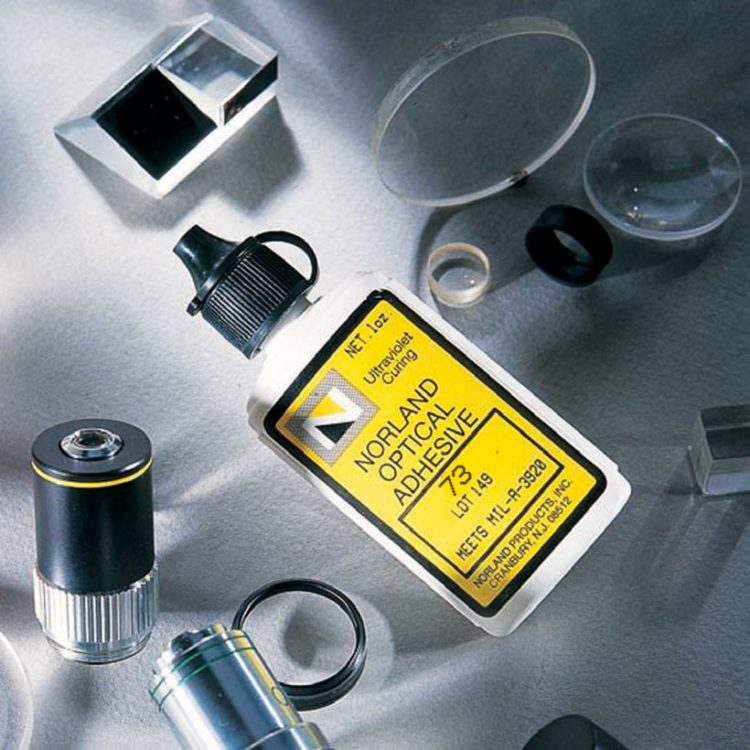It is also sensitive to visible light between 400 – 450 nanometers which will assist in producing faster cures when curing through UV absorbing materials. This one part, moderate viscosity adhesive is 100% solid and offers advantages in optical bonding applications. The use of NOA 76 eliminates premixing, drying or heat curing operations common to other adhesive systems.
NOA 76 is recommended for bonding glass to plastic. The adhesive has best adhesion with plastics such as acrylic, polycarbonate and cellulose acetate butyrate with typical applications being glass to plastic bonding or laminating polarized film between glass.
NOA 76 is cured by ultraviolet light between 315 to 400 nanometers and visible light between 400 to 450 nanometers. The peak absorption wavelengths are 325, 365 and 400 nm. Minor absorption wavelengths are 410, 420 and 450 nm. Full cure requires 5 Joules/cm2 of energy between 315 and 400 nm.
In most optical applications, curing is done in two steps. First a short exposure, or precure, is used. This cures the adhesive enough to allow it to be handled without disturbing the alignment, and keeps the number of alignment fixtures to a minimum. At this time, parts can be inspected and excess adhesive can be cleaned up with an acetone or alcohol moistened cloth. Any rejected pieces are most easily separated at this stage. Cure is completed by exposure for the remainder of the cure time. A general rule is that full cure will take 20 times the precure time using the same intensity light source.
The NOA bonds can be separated in chlorinated solvent such as methylene chloride. The bonded area must be soaked in the solvent and normally will separate overnight if only precured. Longer times may be necessary depending upon the extent of the cure and the size of the bond area. Caution is warranted because methylene chloride will attack many plastics.
When fully cured, NOA 76 has very good adhesion and solvent resistance, but has not reached its optimum adhesion to glass. This will come with aging over a period of about 1 week in which a chemical bond will form between the glass and adhesive. This optimum adhesion can also be obtained by aging the bonded optics at 50°C for 12 hours.
After aging, NOA 76 can withstand temperatures from -80°C to 90°C for bonds to glass, while non-aged glass and plastic bonds will withstand temperatures from -15°C to 60°C. In some cases the adhesive will withstand temperatures to 125°C when used as a film or a coating depending upon the application.

The shelf life of NOA 76 liquid material is at least 4 months from the date of shipment if kept in a cool (5-22°C) dark place in the original container. If refrigerated, allow the adhesive to come to room temperature prior to use.
Care should be taken in handling this material. The Material Safety Data Sheet should be read for this product as well as for any associated products such as alcohol, acetone or methylene chloride. Prolonged contact with skin should be avoided and affected areas should be washed thoroughly with copious amounts of soap and water. If the adhesive gets into eyes, flush with water for 15 minutes and seek medical attention. Use the material in a well ventilated area, otherwise a NIOSH approved organic vapor mask is recommended.


